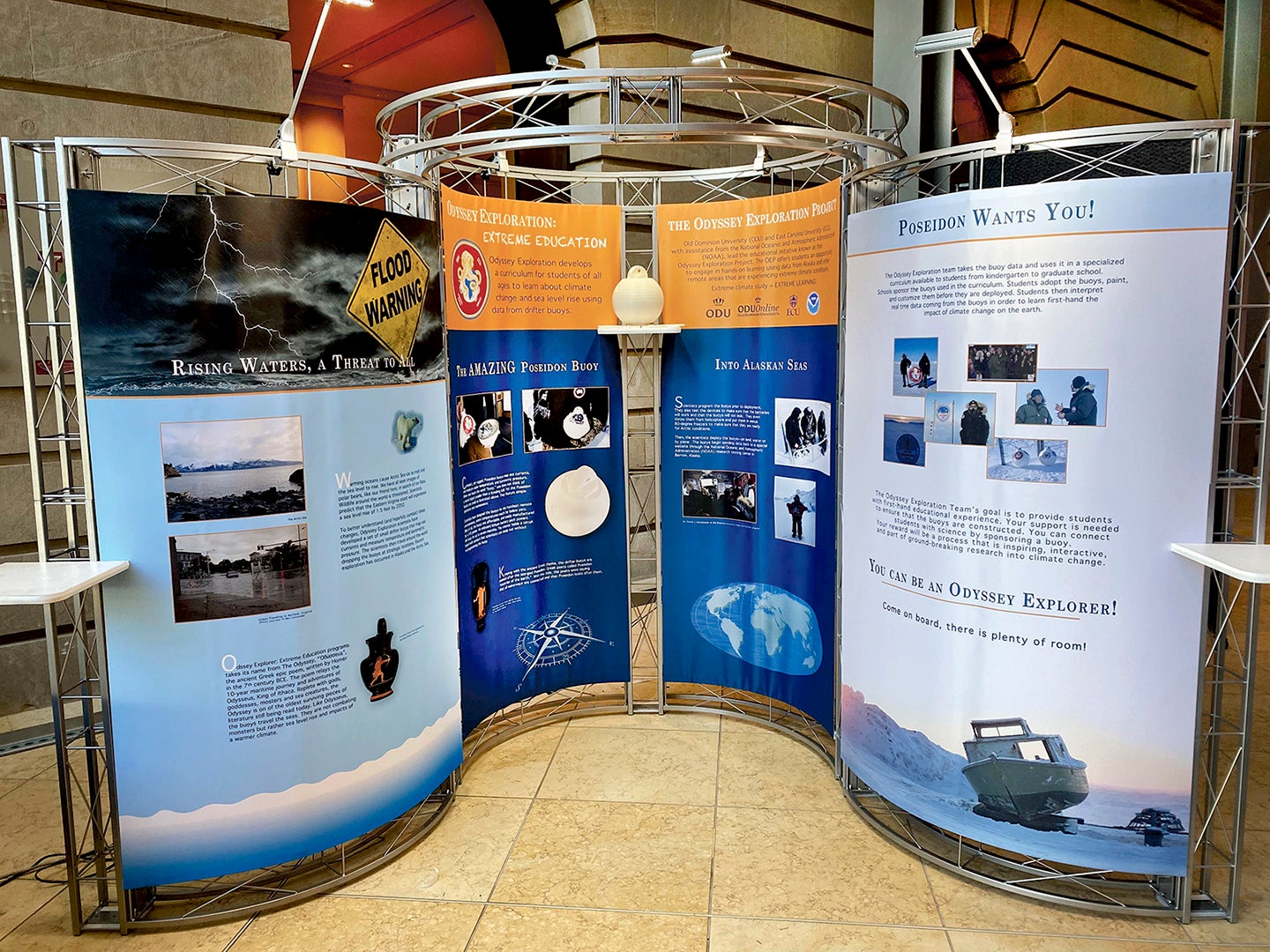Climate change research involves local students
Published 6:07 pm Friday, April 29, 2022
|
Getting your Trinity Audio player ready...
|
By BREANNA SAPP
For the R-C News-Herald
As part of an effort to advance STEM opportunities for K-12 students, North Carolina high school juniors and seniors will have the chance to participate in hands-on climate change research currently conducted by East Carolina University (ECU) and Old Dominion University (ODU) students and faculty.
Manufactured by students and faculty at each university, the research utilizes buoys deployed in Barrow, Alaska that collect data that measure the rate in which ice melts, atmospheric conditions and other factors impacted by rising global temperatures.

Current ECU and ODU research on climate change is being showcased in an exhibit at Slover Library in Norfolk, VA. Contributed Photo
Daniel Dickerson, associate dean for research at ECU’s College of Education, said several students from the Summer Ventures in Science and Mathematics (SVSM) program will have the opportunity to use the data to do hands-on research that will be used to evaluate the efficiency and instrumentation of the buoys. The research study is going to involve data from the National Oceanic and Atmospheric Administration (NOAA) field site in Barrow, as well.
SVSM is a North Carolina program intended for academically motivated students that have a particular interest in science and mathematics.
“It’s just like an engineering kind of project that they’re doing to figure out if the sensors in the buoy are working like they should,” Dickerson said. “So when we deploy these buoys in other places, like in the Arctic or in the Mediterranean or other places, we need to know whether or not the sensors are working properly, how well the batteries perform in the energy system that was developed for them, how that’s functioning, all of those kinds of things.”
As global temperatures rise, Dickerson said ice in the Arctic melts, impacting the function of waves and currents, and ultimately, weather and climate. Though the data collection is currently taking place thousands of miles from North Carolina, Dickerson said these implications can increase storm events, hurricanes, overall precipitation and more for the state.
The partnership between ECU and ODU intends to deploy these buoys throughout the world to measure a variety of ocean currents, Dickerson said, including the Mediterranean, the Atlantic, the Pacific and off the coast of North Carolina in the Gulf Stream.
“What happens in the Arctic, doesn’t stay in the Arctic,” Dickerson said, quoting NOAA.
Junior and senior students who have the chance to participate in the research study will not only have access to real world data firsthand, Dickerson said, but will also interact with the institutions that collected it, work with the instruments and contribute to future buoy deployments by refining the technology through data research.
Students will be engaged with science in an authentic way, Dickerson said, which is something that will help them understand whether or not STEM is for them.
“It’s not just that they’re doing math on the back end without it going anywhere, they’re actually actively contributing to an ongoing research endeavor to address climate change in a very real way,” Dickerson said. “Because the findings that they have will impact future iterations of the buoy that we make, which will impact the data we get, which impacts the findings and the decisions that are made based on those findings.”
In an effort to disseminate information found through the project’s data on climate change, Dickerson said current ECU and ODU research is being showcased in an exhibit at Slover Library in Norfolk, Virginia.
Considering outreach is difficult for research studies with such remote work, Dickerson said the ECU and ODU team finds collaborators to present their research in a traveling exhibit.
“Because the buoy work that we do is far-reaching, both geographically and in terms of the populations that we engage with, we bring in collaborators. Slover Library is one collaborator that we have,” Dickerson said.
Petros Katsioloudis, interim associate dean for Faculty Affairs and Community Engagement of STEM Education and Professional Studies at ODU, said the traveling exhibit is supported by libraries and museums throughout the area, which he believes is an effective way to inform the public on climate change.
The current exhibit showcased in collaboration with Slover Library has been available on the main floor since November 2021, Katsioloudis said, though the exhibit is expected to close between late April and early May before moving to another location.
As far as the partnership between ECU and ODU, Katsioloudis said he is very excited to see the buoys continue to be refined and efficiently collect data for the research study. He said the expertise and research interests found at each university allows for a much better product.
“Each university has expertise and strengths, and combining more than one university together just makes this research study better, more valid, and more efficient,” Katsioloudis said.

